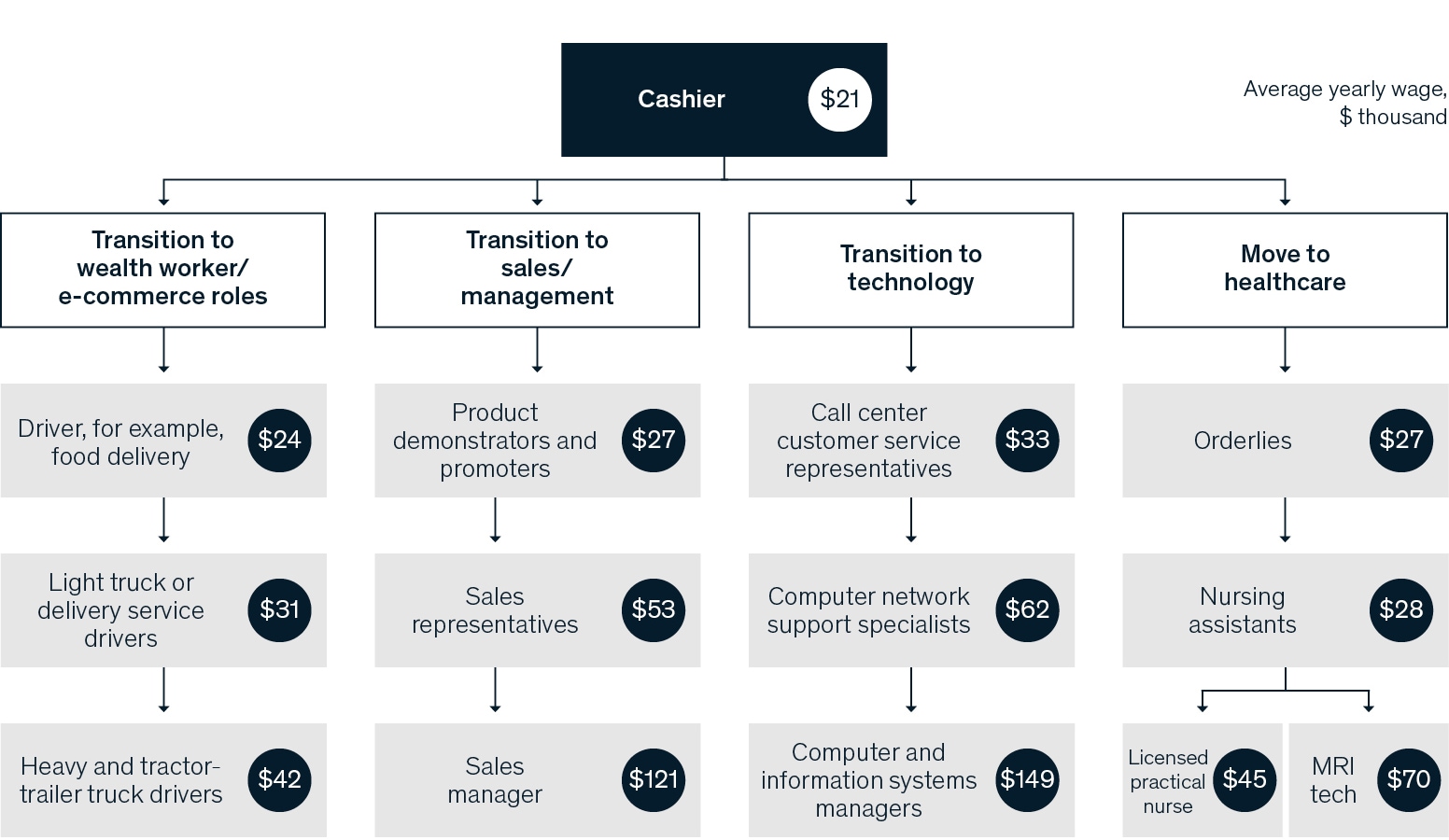The McKinsey Global Institute’s new Future of Work research is about the barista at your favorite coffee shop, the doctor you visit over video, and the manager you haven’t seen in person for a year. Our analysts grouped 800 occupations across eight countries into ten ‘work arenas’ based on the level of physical proximity they require. We evaluated them against over-riding trends—including automation, aging populations, digitization, sustainability, and more—to create the fullest picture possible of how COVID-19 will reshape the ways we work.
Three leaders of the research—Susan Lund, Anu Madgavkar, and Olivia Robinson—take us inside the report’s findings.

What did you learn that most surprised you?
Susan: When we reflected on what the pandemic is really changing, for the first time what mattered most were the physical characteristics of a job. For instance, did your work include close contact with the public? How many different people do you interact with in a day? Are you in a highly trafficked public location—or a setting with few others?
By looking at occupations from that perspective, we could group them in a different way than we traditionally do, either by sector of the economy, like health care, or by type of occupation, like manager. It’s a new dimension to work that becomes very important when we consider the changes going forward.
Olivia: One of the most surprising things for me, based on our estimates, is the decline of low-wage jobs. In the past, it was believed there would be a polarization with growth of both higher-wage and lower-wage jobs and the loss of middle-level jobs, partly due to automation.
With COVID-related trends, we see an additional decline of lower-wage jobs, and that nearly all growth is concentrated in higher-paying jobs. If we can enable the skill and occupational transitions so many people will need, they could be set on paths to higher-skilled and better paying work. That’s a good thing—one we hope our research will help to guide.
During the pandemic, almost every business scrambled to enable their employees to work remotely. Is working from home here to stay?
Susan: Yes and no. The majority of people across industries have no chance to work remotely, but many office workers do. We believe about 25 percent will go to the office a few days a week and work from home the rest. We think this trend may stick; some people report that it can help with work-life balance; some companies are finding that employees can be more productive; and it can save both of those parties money in things like commuting costs for workers and office space for companies.
Virtual working also gives people the option to move to smaller cities and the suburbs. At a recent meeting of human resource leaders, many were talking about opening up satellite locations or hubs in different cities to tap into entirely different talent pools.
According to the report, one in 16 people will have to change not just jobs but industries. How will they do that?
Susan: It won’t be easy. In our research, for example, we take the example of a cashier and map out four possible career pathways: in health care, IT, transportation and delivery, and sales and marketing. After being a cashier, with some training, that person could gain the skills they need to become a call-center representative. From there, if they work in sales-type call center jobs, they might move into a career in marketing and sales outside the call center.
Researching and mapping those kind of career paths will be essential for helping people figure out how to get on an upwardly mobile career track. But this is not just up to individuals to figure out. Companies, educators, and policymakers are all going to have to work together to help people identify these career pathways and then create the programs, resources, and reskilling opportunities necessary to make them possible.
Possible career pathways from a cashier job to growing, more highly paid occupations

We know that reskilling will be critical to helping thousands of people transition from one job to the next. How might that happen at scale?
Anu: A number of large companies have invested in different sorts of training and apprenticeship programs, creating upwardly mobile career paths for their employees. For instance, Walmart has more than 200 academies for their associates with training in management, supply chain, and technology. IBM, Bosch, and Barclays started apprenticeship programs to train workers for tech jobs with career pathways.
At the national level, there are lots of examples we can learn from but no one has yet cracked the code. In Singapore, India, and the countries of the EU, we see national platform-based reskilling initiatives, such as using digital learning passes for citizens.
But as Susan mentions, people can’t do reskilling alone. We’ve got to take the good ideas that are happening within companies and communities and scale them nationally to include millions of people. People will need shorter term programs to get the basic skills they need for an entry level job in a few weeks—not years—and the learning has to be targeted to the essential tasks for the immediate term, similar to Generation programs.
Generation Z workers have been disproportionately affected by COVID-19. What advice would you give to someone just starting out?
Olivia: I would say, if possible, focus on building skills for jobs that are in growing industries, such as healthcare, tech, engineering, science, and logistics. The good news is that there will also be high growth in jobs that require socio-emotional skills, such as negotiation, influencing, and decision-making. And we may see new positions emerging because of COVID-19, such as remote-work coordinators.
Hiring may also be changing. A number of companies are focusing less on degrees and job titles and more on skills assessments. Job platforms are matching candidates with jobs based on skills not past job roles or titles. This can all help open up opportunities and improve mobility.
In terms of mindsets, I would recommend against thinking of your education as something that is one day finished, and then you just work. That divide no longer exists; your education never ends. Your career will be about life-long learning across different occupations and industries.
Finally, as you look ahead, do you see any silver linings coming out of this crisis?
Susan: Most companies are reimagining themselves right now. They are embracing speed and flexibility and agility, and the flattening of hierarchies in an effort to make decisions faster and better. For workers, this can be an opportunity to move onto career pathways that offer greater upward mobility. And for the economy, we could see higher productivity growth if we help workers make those transitions.